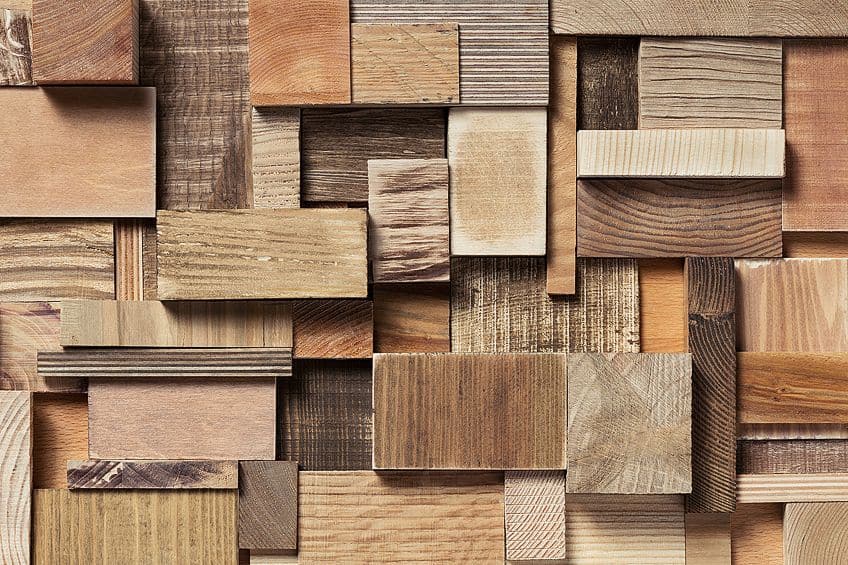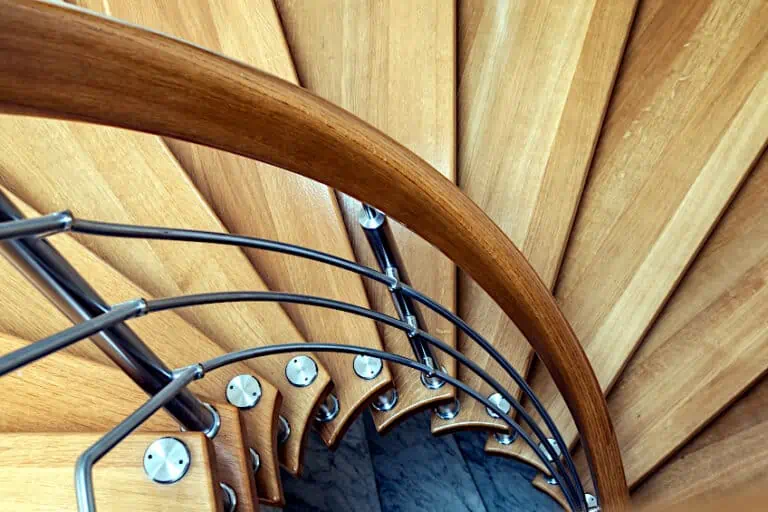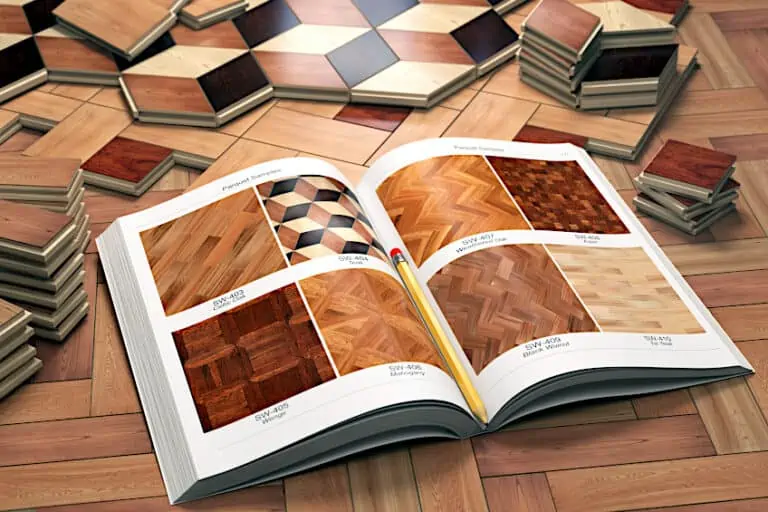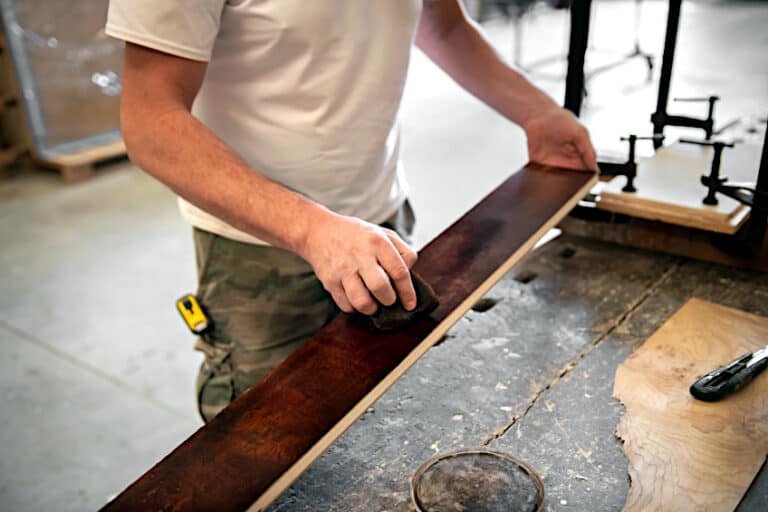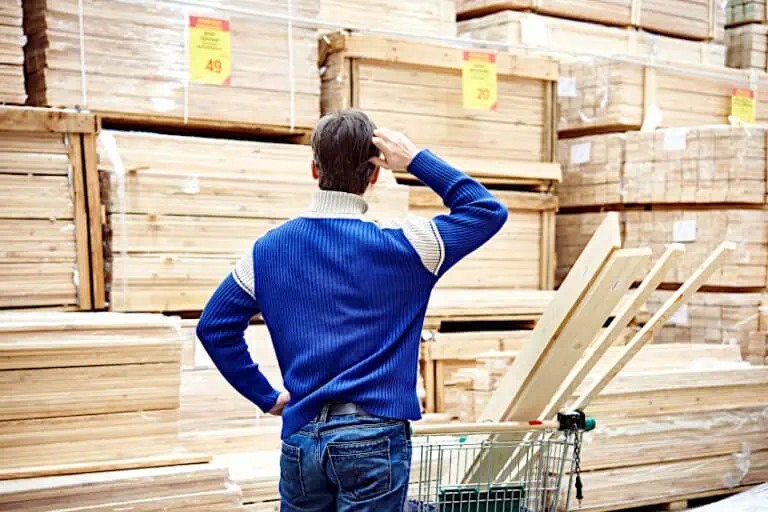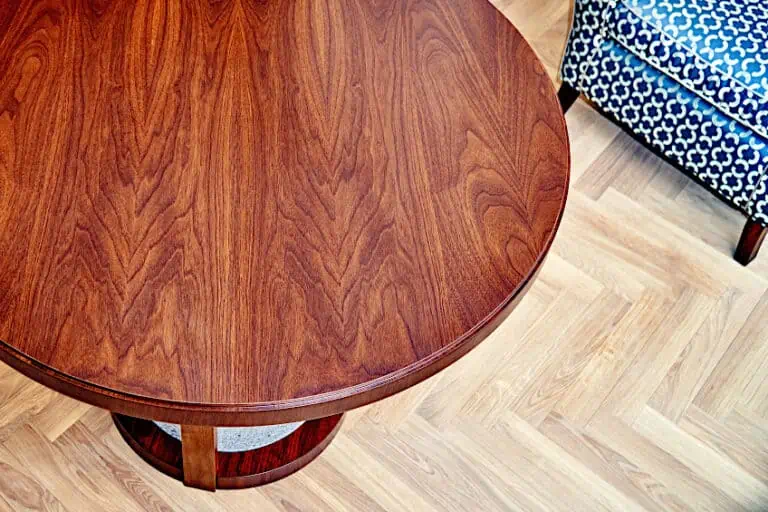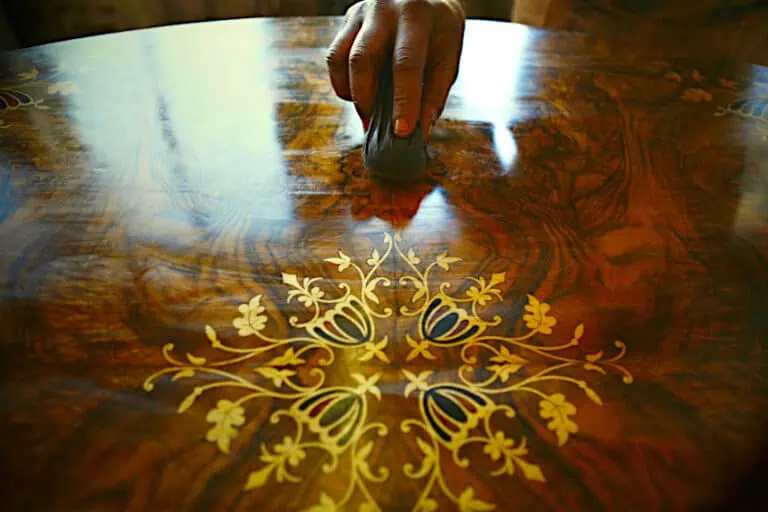What Is Engineered Wood? – A Useful Guide to Manufactured Wood
What is engineered wood? Engineered wood can sound like something someone cooked up in a lab while they were trying to solve the deforestation problem, but in reality, it is simply a combination of applying everything we know about the best woods available to us and combining them to create a tough, versatile, and long-lasting material that benefits us in our everyday lives. Below you will find some information about engineered wood you might find useful.
What Is Engineered Wood?
Engineered wood can be characterized as a type of flooring material comprised of different types of wood. These woods are compiled on top of one another in thin layers and compressed for them to become cohesive and form a single piece of unified wood. These layers can add different characteristics to your piece of engineered wood depending on the materials you choose to use. A few characteristics you might want from engineered wood for flooring purposes are rigidity, heat retention, flexibility, and longevity.
The convenient part of choosing engineered wood compared to hardwood, pine, or oak is that you don’t have to compromise on any particular characteristic you would like your wood to have.
You can have the dark, cosey finish of hardwood with the flexibility and lightness of pine, with oak and other materials as an intermediate layer. Yes, you are not limited to using pure wood when creating engineered wood! In fact, there are a wide variety of composites, rubbers, and plastics you can add to give your engineered wood its desired characteristics.
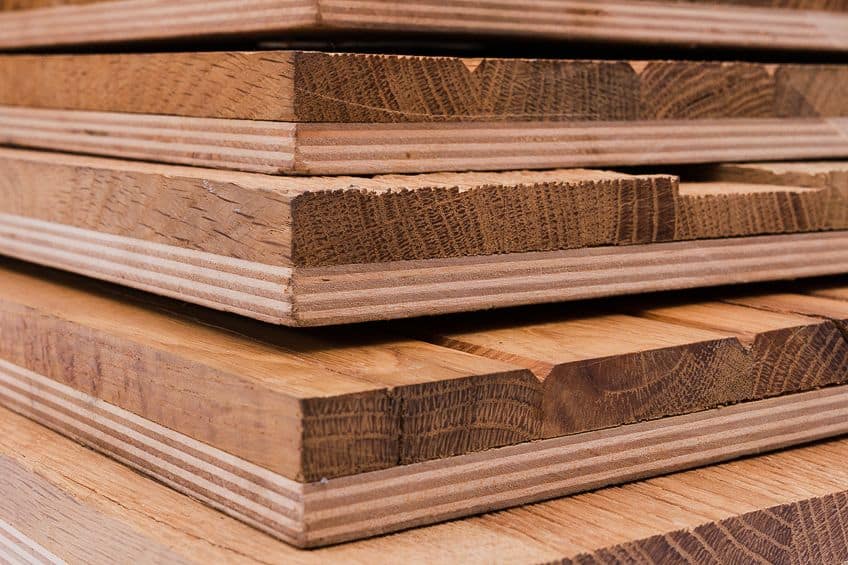
What Are the Applications of Engineered Wood?
Due to the versatile and interchangeable nature of engineered wood, there are a wide variety of applications it can be used for. Remember that due to the combination of naturally occurring wood and composites, engineered wood can be specifically crafted for certain applications, adding, and removing characteristics as you see fit. Let’s have a look at some common applications for engineered wood.
- Custom interior design features
- Furniture applications
- Doors and doorframes
- Window frames and windowsills
- Cupboards
- Countertops
- High-strength shelving units
- Drywall reinforcement
- Load-bearing applications
- Garden furniture and foul weather structures
What Are the Pros and Cons of Engineered Wood?
There are many pros and cons to using engineered wood. Just like any other construction material, there are a variety of instances where engineered wood can work to your advantage, however, there are other instances where other materials which will serve you better objectively. Let’s have a look at some of the advantages and disadvantages of using engineered wood.
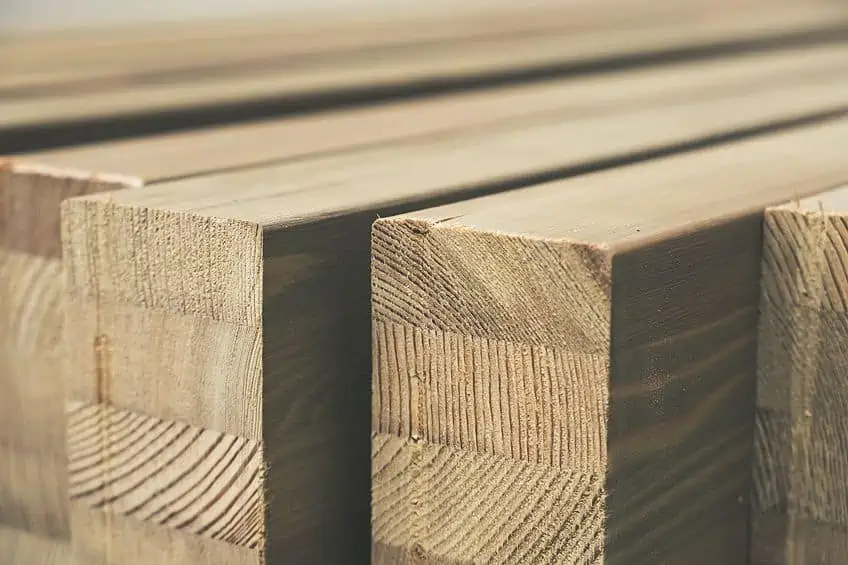
Pros
Engineered wood is often referred to as manufactured wood due to some of the composite elements included in its design being man-made. This is because these composite elements are comprised of “leftover” or “cut-off” materials, which are created as by-products of refining other materials. Thus, engineered wood is a lot cheaper than regular hardwood or other 100 percent, naturally occurring construction materials.
In addition to these types of woods being more readily available and far cheaper than conventional construction materials, they are also far more versatile and robust in their areas of application. In fact, manufactured wood can withstand dramatic temperature changes, bear far heavier loads, and is easier to install than its naturally occurring counterparts.
If the prospect of having to go to your local lumber yard and choosing the material that you will have to live with for the next 50 years seems daunting, you are not alone. The options can often be limiting if you don’t have the imagination, experience, and skill set to cut, install, and finish conventional wood on your own.
Fortunately, engineered wood has the added advantage of coming prefinished for your convenience!
You can also select from a wide variety of colors, scents, shapes, and finishes due to the composition of these types of wood. In fact, there are eleven recognized variants of engineered wood combinations, including veneer, particleboard, fiberboard, laminated timer, cross lamination finishes, hard beams, and even finger joints.
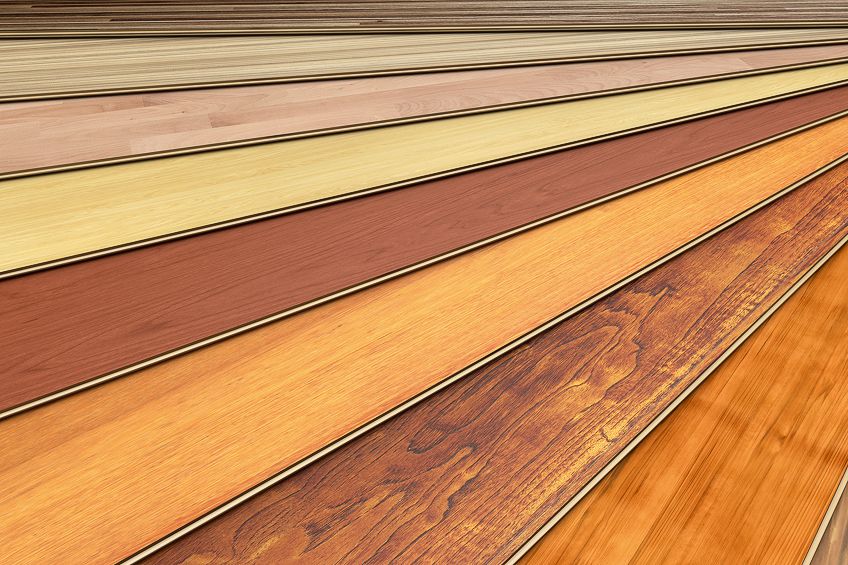
These types of construction materials also have a positive impact on the environment. Because engineered wood is made from what can arguably be described as recyclable materials (excess materials produced through the manufacturing process of conventional construction materials), they are seen as 100 percent more energy- and output-efficient compared to conventional materials.
To illustrate how strong, versatile, and robust man-made wood can be, some construction companies have erected huge structures using engineered wood with special composites as load-bearing elements.
Engineered woods are also extremely easy to install compared to conventional wood flooring. Where you would need a circular saw on hand when installing a hardwood floor to adjust certain shapes and sizes, engineered wood comes pre-cut. So, instead of needing to arrange the individual panels tightly at your discretion (which, let’s face it, is not always reliable) as you would with hardwood, you simply interlock the pre-cut panels of engineered wood in the designated space.
A great advantage of the engineered wood panels interlocking with one another is that the finished floor is essentially completely flush, making cleaning effortless and ensuring that those with allergies with never again have to suffer through a night of sneezing and congestion due to dust trapped in the floorboards.
Cons
There are not as many disadvantages to engineered wood as there are advantages, but it is worth noting that there are certain aspects and applications where engineered wood would not be conducive to your end goal. This being said, engineered wood can be tricky to work with if your old experience is working with conventional construction or crafting materials.
Where you buy your wood is extremely important, regardless of whether you are working with conventional wood or engineered wood. This is because the quality of the composites and the manner in which they are joined can vary considerably from supplier to supplier.
In addition to the quality of the joining process and the wood itself, the finish applied to man-made wood is extremely important.
Remember that this material is a combination of compressed leftover material. Therefore, just as sawdust can be used to absorb spilled oil or water, these materials can end up soaking up unwanted moisture if a poor-quality finish is used on them.
This can result in your flooring or any other entity constructed with this material swelling up and disjoining from other panels in their unit, ultimately leading to them needing to be replaced. Engineered wood comes in near limitless variations of combinations and composites. You can have an order of engineered wood designed for a specific purpose, for example, insulation or flexibility with good shape retention for a floor with a high volume of foot traffic.
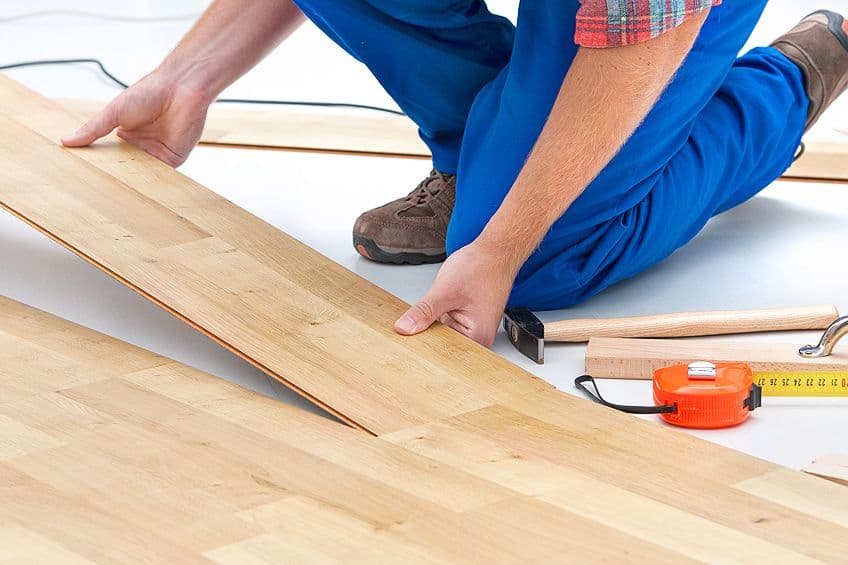
The problem arises when you attempt to install and secure these materials, as they can often be quite dense and heavy which makes them a challenge to work with compared to conventional materials. Another thing to keep in mind when considering constructed wood for a workpiece is that the design and production of these materials often involve the use of toxic substances to make the material combination work for its intended purpose.
Outside of the production process, you will also need to ensure that if you are cutting these materials, you wear both respiratory and eye protection, as cutting panels of engineered wood can potentially release toxic fumes from the adhesives used to secure the various layers together. You must ensure that the quality and material composition of constructed wood you use for outdoor purposes is conducive to the environment, as selecting materials that are fundamentally incompatible with their environment can result in structural failure and potential injury.
Essentially, understanding what is required of the material composite you want to be designed is of extreme importance.
If you are using man-made wood for commercial applications for the first time, you have the option of consulting your supplier about the best composite board for your application so as to avoid both buyer’s regret and the failure of said project.
What Is Engineered Wood Made Out Of?
As we covered previously, there is quite a variety of engineered wood available on the market today. In fact, these slats can be made out of (within reason) any material you so choose. So, this means that you have virtually limitless combinations and possible applications with which to use the so-called man-made wood. Here are some of the materials and combinations these slats are made in.
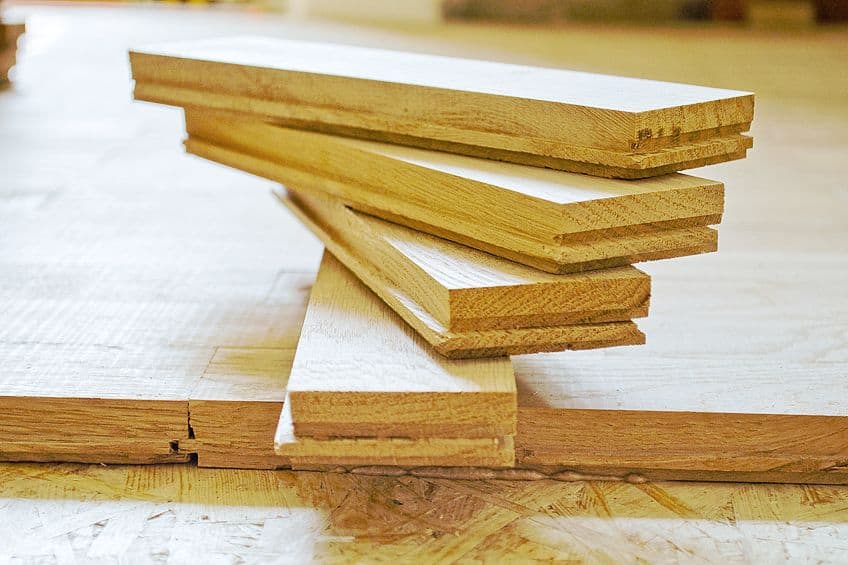
Fiberboard
One of the most beloved types of engineered wood, fiberboard can be used for a variety of applications and is really easy to make. Simply run hardwood and any other secondary material you would like through a wood processor and add a high-grade adhesive.
This means that you can have your desired strength and volume produced quite easily. These slats can be produced in high volume, which is perfect for contractors who use this as a secondary covering for surfaces or higher density formulas for load-bearing home implements.
Densified Wood Cuttings
If you have ever made rice cakes, you know that compressing rice together creates an object that is much denser than the individual units it is comprised of. Densified wood is created using the same principle -essentially, these are wood chippings, sawdust, and similar residual materials which are compressed together in extreme density to form a larger solid object.
These slats are compressed under heat to increase the malleability of the cuttings, meaning they can create an object that is three times denser than if one were to compress them conventionally, due to thermal expansion.
Densified wood has a wide variety of applications and, due to recent improvements in manufacturing processes, it can be designed to have the same integrity as mild steel. This means that in some instances it can be used for load-bearing purposes, as well as more mundane applications such as furniture design and even kitchen countertops if the core material is insulted and protected adequately.
Chemically Processed Densified Wood Cuttings
Sometimes coming up with a new idea is not as effective as innovating on existing designs. This is precisely why chemical densified wood was introduced: It achieves this by breaking down a naturally occurring chemical in the wood called hemicellulose. The substance that results from this chemical being broken down is then compressed under extreme heat, forming a bond that does not rely solely on compression but has the added advantage of chemical adhesion between the compressed chippings in the slats.
The strength that results from this production process is far greater than the aforementioned densification process. In fact, when the conventional densification process increases the strength of a slat by three times, chemical densification increases the strength of an individual slat by up to eleven times. This means that chemically processed densified wood can be used to substitute not only mild steel but concrete as well in construction scenarios.
OSB: Oriented Strand Board composite
This type of engineered wood is commonly mistaken for chipboard. In fact, most trendy restaurants have complex furniture and aesthetic fixtures made of the type of wood. This type of board is created by compressing relatively long rectangular wood fragments, these fragments are then arranged into mats and then stuck together with special high-quality water-resistant adhesives.
These mats can be combined either bi-directionally or parallel to one another depending on what the application demands.
There are no recesses or holes in the objects comprised of this material, and they are 100 percent solid compared to the types of engineered wood we have covered thus far, more closely resembling objects that have been 3D printed than those that have made using conventional construction.
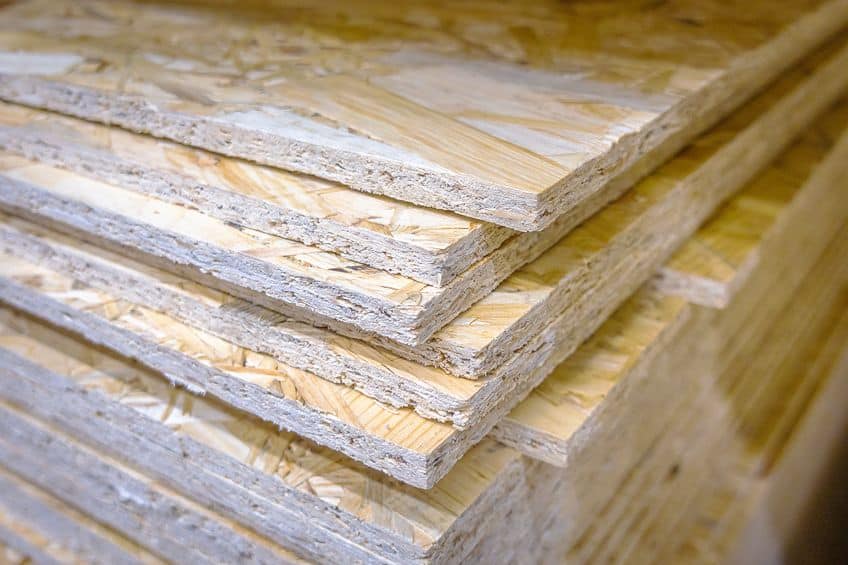
Plywood Composite
You are probably aware of what plywood is. It is one of the best hardwood substitutes available and is a favorite of both contractors and interior designers due to its rigidity and versatility. Plywood is made from a series of veneer sheets joined together via industrial-grade adhesive to ensure a long-lasting watertight bond.
These sheets are joined in a crosshatch fashion, meaning while one sheet will be adhered with the grain running vertically the next will be adhered with the grain running horizontally to maximize the rigidity of the slat. Plywood composites can be used for lots of different applications, for example, you could create a dining room table, shelving units, rocking chairs, storage chests, dog houses, kitchen pantries, and even a rowing boat.
Structural Trusses
Have you ever climbed into your attic and hit your head on a low-hanging beam? Well, those are known as roof trusses, and these days, they are commonly made of engineered wood. They exist to provide structural integrity to roofing and foundations, and those made of engineered wood are both cheaper and easier to come by than solid wood pieces and can be designed to be even stronger than solid wood if need be.
As you can imagine, these are popular among contractors as they won’t cost you an arm and a leg and can be made to your specifications for a particular purpose. This particular use of engineered wood created a big change in the construction industry for this very reason.
Laminated Timber
While not what you would consider being engineered wood if you were to use the other composites we have covered as a metric, laminated timber consists of engineered pieces of wood that are stuck together using high-grade, water-resistant adhesives. These are typically fashioned into load-bearing pillars or arches which work better than solid pieces, as the forces exerted on them are shared between the now-combined smaller pieces of solid timber.
It is often cheaper and more effective to have laminated timber commissioned for arches or beams than using a solid piece of timber for the same purpose. Laminated timber also has the advantage of having a grained appearance so you can achieve the same aesthetic as solid wood at a fraction of the cost!
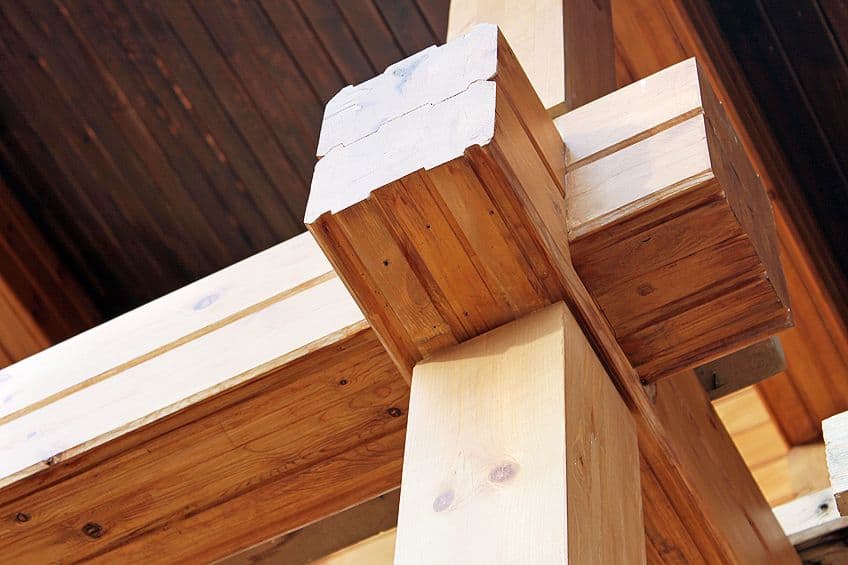
Laminated Veneer Lumber
A veneer refers to nearly paper-thin pieces of wood that are often used as external coverings for workpieces made of strand board and compressed wood cuttings in order to give the workpiece a flush, seamless finish. Although this is what veneer is typically used for, it can also be used to create laminated veneer lumber, which is essentially lots of these paper-thin layers stuck together and compressed in high density to create three-dimensional forms.
This composite is extremely strong and has amazing applications in the construction of homes and buildings. It can easily be used to replace solid lumber and can be cheaper than structural steel to a certain degree.
Choosing the Correct Wood for You
There are many other variations of the types of engineered wood mentioned above, including various wood chippings, adhesives, and compression methods, although these remain the same on a fundamental level. Choosing the best engineered wood for your desired application is of the utmost importance and should never be overlooked, as tolerances, structural stability, and resistance to both heat and moisture vary considerably in composites. Always consult the supplier or manufacturer regarding the best-engineered wood composite for your projects.
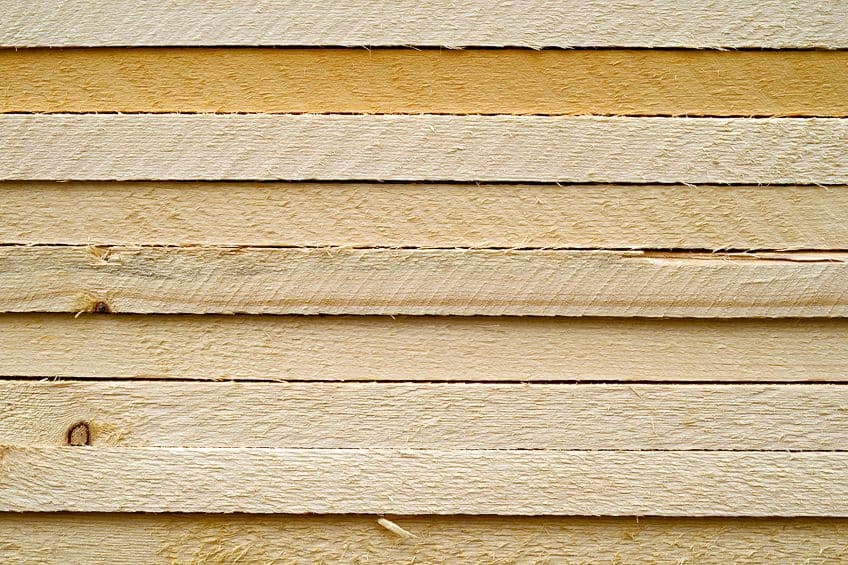
What Are the Differences Between Softwoods and Hardwoods?
There are a few key differences between softwoods and hardwoods. Knowing these key differences will not only help you identify each type of wood but will help you decide which type of wood is best suited for certain applications. Let’s have a look at some of the key differences between the two below.
| Soft Wood | Hard Wood |
|
|
How Do I Tell the Difference Between Hardwood and Engineered Wood?
There are a few key characteristics that will help you differentiate between hardwood and engineered wood. Suppliers might not be above substituting one for the other if they need the sale, and the last thing you want is overpaying for what you think is a solid piece of the timber only to discover that what you have is fibreboard. Let’s have a look at some of the key differences between these two materials.
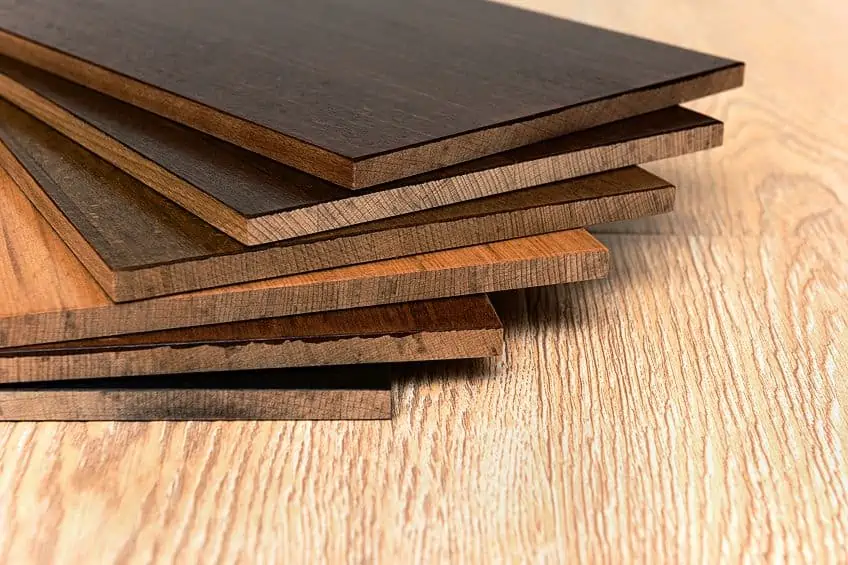
Have a Look at the Edge of a Loose Board
This is the easiest way to tell the difference between engineered hardwood and solid hardwood. As you have probably figured out by now, simply looking at the exposed edge of a flooring slat will give you irrefutable evidence of what kind of wood you are dealing with. Since engineered wood is made of up multiple layers of different materials that have been compressed and glued together, this will be immediately apparent when looking at the exposed edge of a floorboard.
Conversely, the opposite applies to identifying hardwood, as looking at the edge of a piece of board will reveal the wood’s grain.
Use a Mirror on Installed Flooring
If you are moving into a new place and the realtor is trying to use the “hardwood floors” as a major selling point, but something does not feel quite right, a mirror may well be your best friend. Tearing up the flooring in a place you don’t own can be frowned upon, so try identifying a piece of flooring near a corner unit, kitchen counter, or wall where the wood would have had to be cut by hand in order to fit the exact gap between the surface in question and the pre-cut flooring. Pop the edge of a small mirror on the wall with the face of the mirror tilted up toward you – if you see layers, you have engineered wood, and if see grain, you have hardwood. It is as simple as that.
Use the Dent Test
Have you ever found that the cheap office desk at work dents very easily? Simply pressing your fingernail into these types of furniture can leave a lasting dent in the surface which is barely noticeable unless you were to look at it.
This is often a clear sign that something is made of engineered wood, as the polyurethane coating covering these surfaces is very susceptible to indentations, where are pure hardwood is solid and its finish will be much tougher to penetrate compared to that of engineered wood. This being said, we do not recommend you go around making holes in every prospective home you visit.
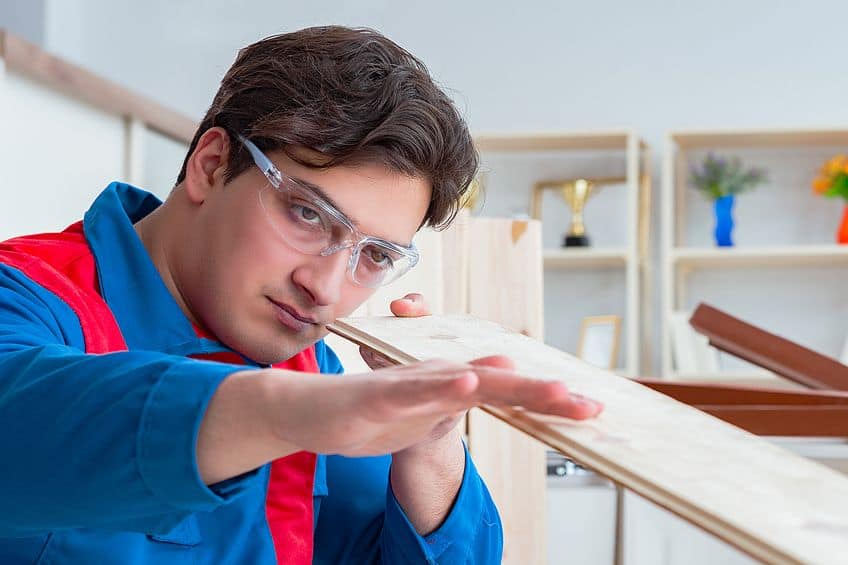
Is Engineered Wood Cheaper Than Hardwood?
Certain things in life do indeed indicate class, and in the past owning composite flooring or furniture would leave the wealthy turning their noses up at you. However, things have changed, and both purchasing and owning hardwood furniture can be more trouble than it is worth to the average person – between maintaining, varnishing, cleaning, and treating hardwood furnishings, this can require time that most simply don’t have.
Engineered wood furniture is appealing because it is easy to maintain, easier to install, easier to produce, does not trap as much dust, and most importantly, it is marginally cheaper than solid wood furnishings.
On average, hardwood as a material can range anywhere between $4,00 to $12,00 for a square foot. This can add up quite quickly if you were trying to furnish an entire two-story home. Hardwood does, however, have a certain feel and coziness that many people feel engineered wood simply does not provide, but this does not mean that engineered wood is a cold heartless material.
In fact, to make up for what you may perceive as creating an impersonal atmosphere, you can come by a square foot of engineered wood for anywhere between $2,40 and $10,00, which will allow you to furnish an entire two-story home for significantly less money compared to using solid hardwood.
Does Engineered Wood Last Longer Than Hardwood?
Whether you are considering the longevity of flooring or furnishings, choosing between solid hardwood and engineered wood can be a tough call to make. Hardwood has been used for hundreds if not thousands of years to furnish castles and average homes alike, and many of these creations are still around today. To say engineered wood does not last as long as hardwood would be objectively untrue though, as these materials have not been around all that long, although there are comparisons to made nonetheless.
Solid hardwood furniture does take a lot of maintenance to ensure the prevention of rot and loss of aesthetic finish.
Varnishing and treating both flooring and furnishings comprised of solid hardwood can take some serious elbow grease, but if done regularly, this will result in longer-lasting items. Solid hardwood is typically denser and therefore more resistant to damage by blunt force than engineered wood, and if damaged in this manner or by blunt force, it can be sanded down and refinished multiple times, as its composition is solid.
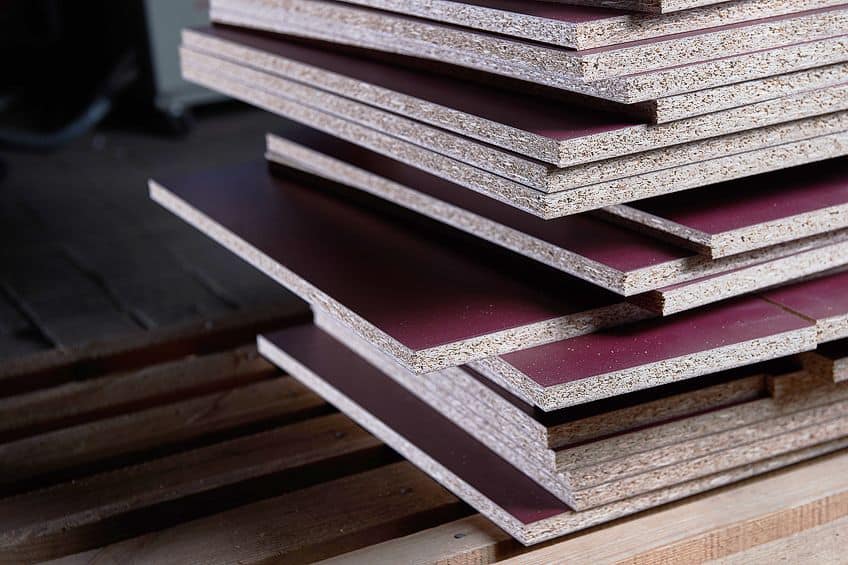
Engineered wood furniture and flooring can be equally as durable as solid hardwood. In fact, depending on the composite materials it is made of, it can be even denser and have a higher tensile strength. This being said, the surface of engineered wood flooring can be damaged quite easily, and as a result, it cannot simply be sanded down and resurfaced once every few years.
The reality is that the type of engineered wood typically used in flooring applications have to be replaced if they are badly damaged, and if more than one slat is damaged, it can be difficult to find the same color, grain, and finish to match your existing flooring, meaning that you will have to replace the entire floorboard in the interest of uniformity.
Choosing the right type of wood to furnish your home can tricky, but now that you are armed with all the facts, you can go out and choose a material that not only suits your pocket but also the lifestyle and applications that your furnishings will endure. Remember to consider all the factors and as always, safety first!
Frequently asked Questions
Is Engineered Wood Good?
Engineered wood can be made out of virtually anything you like. Simply explain the application you wish to use it on, and your supplier will either suggest an engineered wood that is conducive to your purposes or will suggest which materials you should have infused into the engineered wood that would work for you. Engineered wood is cheaper to buy and easier to manufacture than conventional hardwood.
Is Engineered Wood Good for Furniture?
Depending on the supplier and upholsterer, purchasing furniture made of good-quality engineered wood can last you many years. Good-quality engineered wood is not only light but is also durable, easy to work with, and highly customizable.
Is Engineered Wood Waterproof?
Although not every engineered wood is waterproof, there are many variations of engineered woods that are designed using waterproof industrial-grade adhesives. In addition to this, the final coating of engineered wood is often veneer, which can also be treated to provide a waterproof outer layer for flooring and other furnishings.

I have been into woodworking since 2005 and woodturning since 2011. Because of my love for wood and woodworking, I started woodhappen.com to teach other enthusiasts about how to finish and seal wood, the best woodworking tools, the different types of wood, and everything else related to woodworking! Read more about me here.

